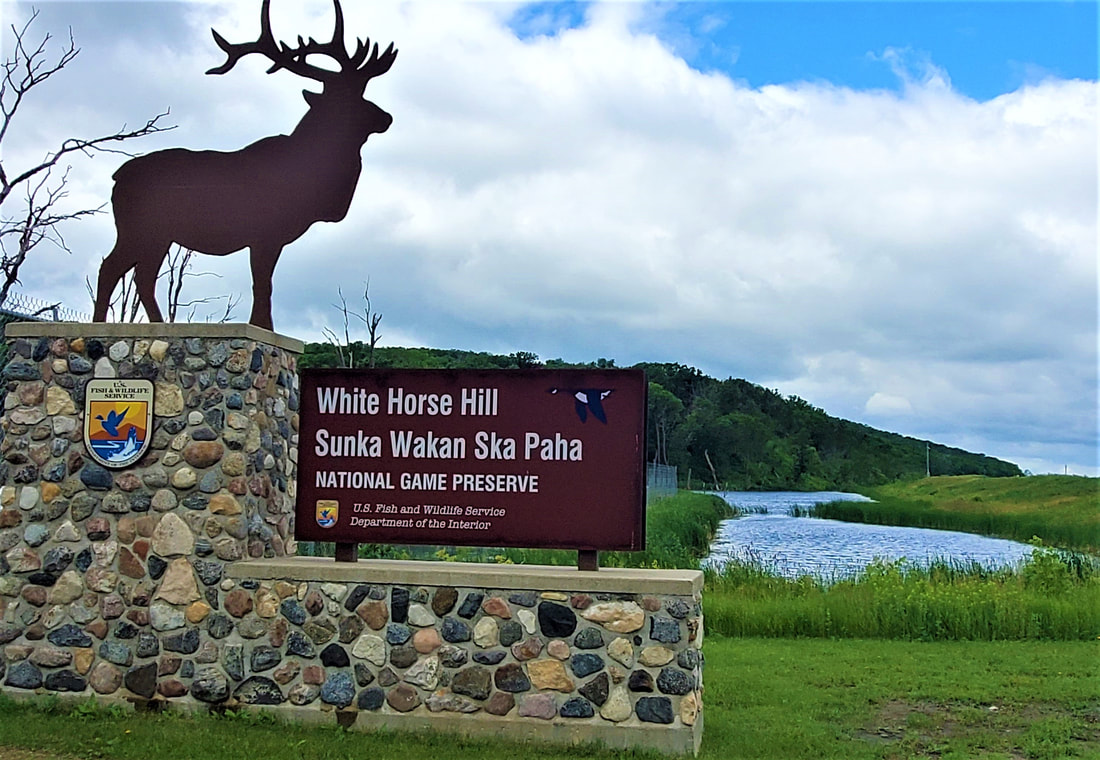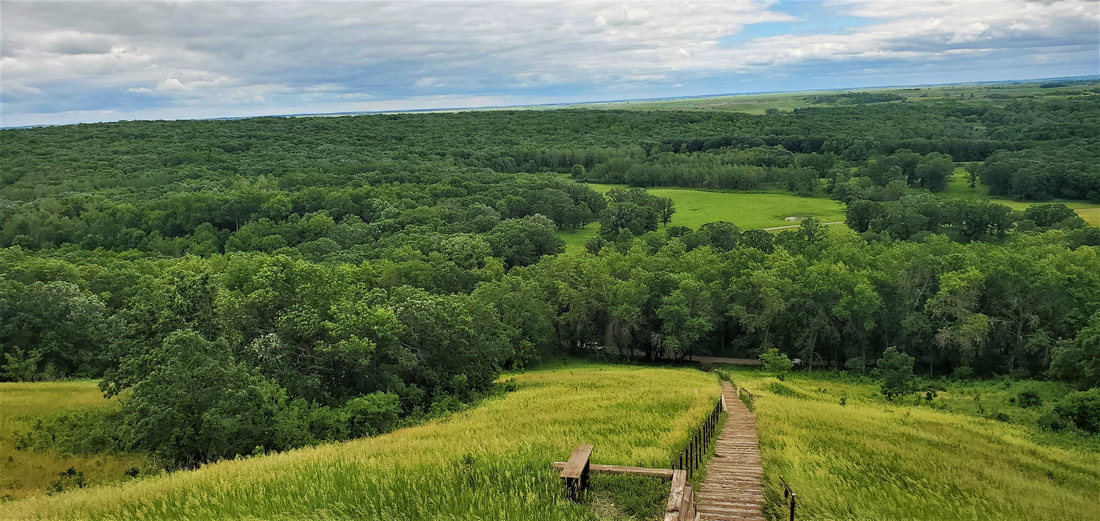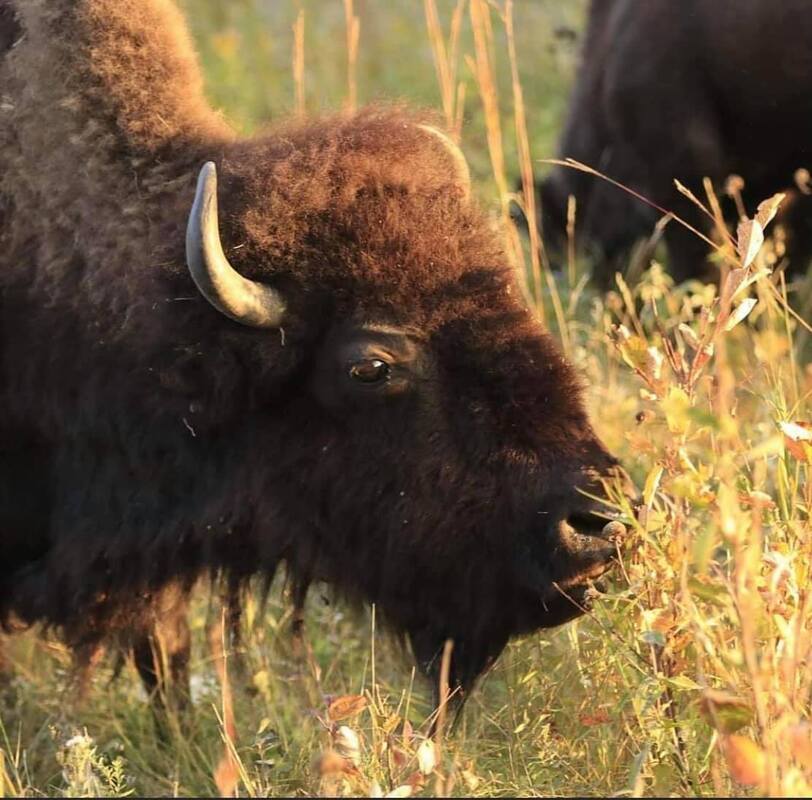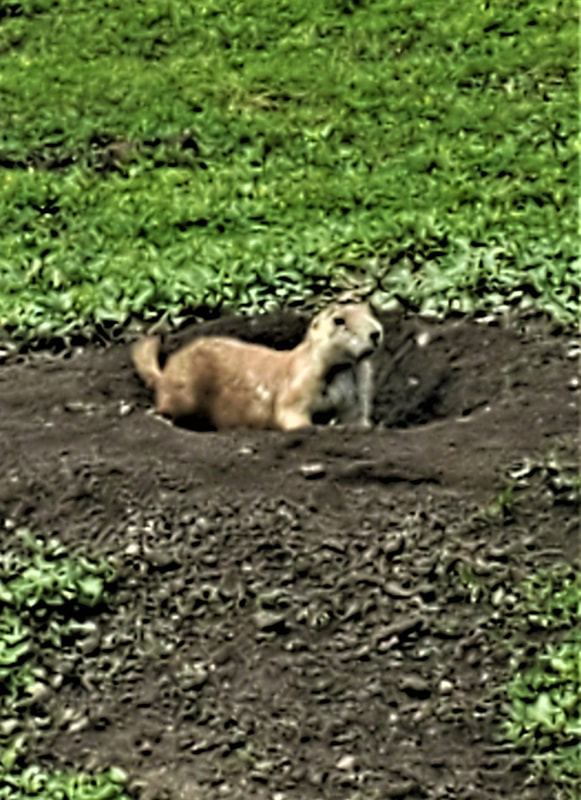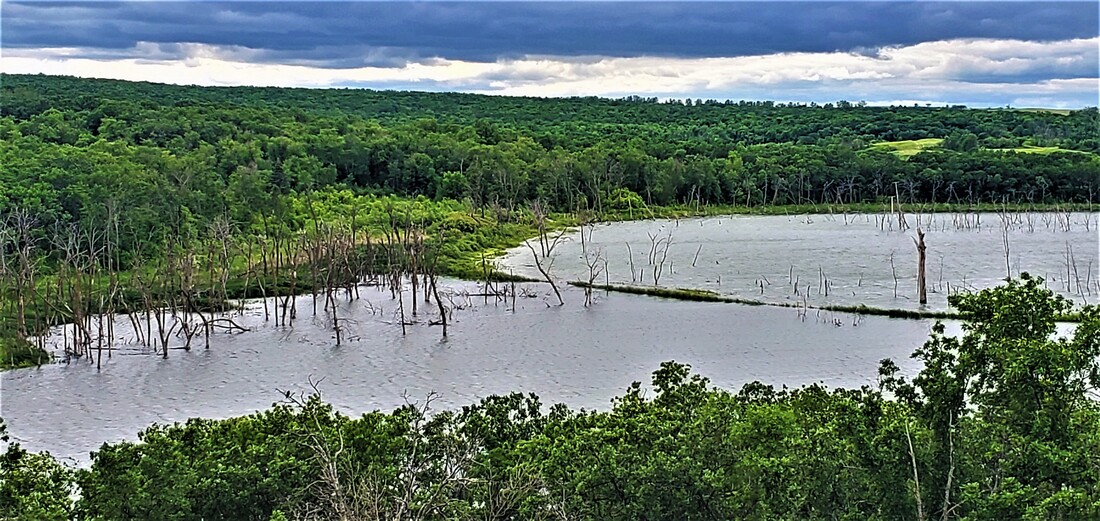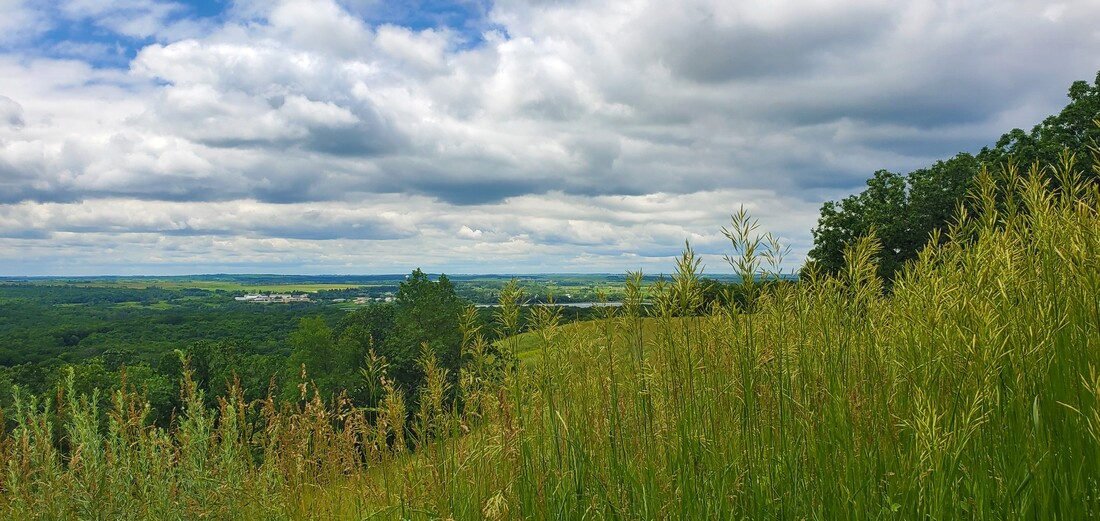The volunteer couple at the White Horse Hill Visitors Center told us where to look for the bison herd, except for one old bull who liked to wander off by himself and “rake you over with his stink eye” if you came upon him. So naturally that became our mission. Never mind the elk, the prairie dogs, the trumpeter swans, and the rest of the bison herd. We wanted to find old Stink Eye.
The 1700-acre White Horse Hill National Game Preserve in northeast North Dakota dates back to 1904 when it was originally designated a national park. In 1914 it was re-classified as a Game Preserve for nesting and migratory birds. In 1917 bison and elk were introduced to the Refuge as their numbers had plummeted on the Plains. In the 1970s, prairie dogs joined the general melee.
The Preserve sits on the southern bank of Devil’s Lake, at 330 square miles the state’s largest natural body of water. A remnant of an ancient glacial lake that once covered 4000 square miles of North Dakota, in historic times Devil’s Lake has alternately diminished and grown. In the drought-prone Depression era, it bottomed out in 1940 at a surface level some 50 feet lower than today. Then came a gradual rise through the decades, followed by a quick acceleration from the 90s to the present as regional rainfall increased. Since the lake has no natural outlets, the result has been a fisherman’s delight and a farmer’s nightmare. One farm at the former shoreline has lost 2500 acres to the swelling lake. Half-submerged barns haunt the shoreline. Roads have been swallowed up by the growing lake. It has lapped up the Preserve’s lowlands.
Colleen Graue, Visitor Services Manager for White Horse Hill, says that despite the Preserve’s modest size, White Horse Hill harbors three distinct habitats. Wetlands at the lake’s perimeter are ideal for migratory birds. Elk love the woodlands. Bison and prairie dogs are partial to the prairie savanna.
Hiking near the Visitor Center along the fence of the bison/elk enclosure, we saw none of the Refuge’s dozen elk, but noted their handiwork in clearing the underbrush as they ate their way through the woods. Woodlands are rare to North Dakota, where only two percent of the land is forested. But White Horse Hill’s location on the southeastern edge of Devil’s Lake helped the woods get established in pre-settlement times, Graue explains. Prairie fires that elsewhere swept across the landscape and kept tree growth at bay were snuffed out here by the big lake, allowing the forest to take hold.
When we emerged from the woodland trail onto a prairie bluff, the trail’s descent toward the lake was blocked off. An old trail that once rimmed the lake was now underwater, and the field beyond it was flooded. Dead, drowned trees lined the old shoreline and the hiking path. The lake’s high waters have impacted the Preserve in other ways as well. The Visitors Center is new since 2006, necessitated by the rising lake waters, says Graue. The lakeside road to the old Center is now underwater.
But the flooded lowlands have been a boon to the Preserve’s ducks, geese, pelicans, kingfishers, swans, otters, water snakes, frogs, and other wetland species.
The Preserve’s 4.5-mile auto tour loop within the bison/elk enclosure is a favorite for visitors. Here, beyond the wetlands, the prairie rolls across the valley floor. The grasslands are home to at least two prairie dog towns. When we stopped at the edge of their burrowed city, they seemed as curious about us as we about them. Perched on hind legs while chewing stalks of grass, they sized us up, wondering perhaps whether our Honda was a big white bison. Finally, though, the small engineers nosedived back into their burrows to return to the work of interconnecting the holes with tunnels.
In another section of Prairie Dog Town, a dozen or so of the twenty-ish bison milled about the burrows, tugging at the sod and looking bored. A few calves among them pondered the prairie dogs with curiosity and amusement.
The bison herd is small, but the herd is prized throughout the federal Fish and Wildlife Refuge system for its genetic purity, says Graue. And because the acreage is limited, the herd has to occasionally be culled. Bison from White Horse Hill have been sent to other national wildlife refuges. At other times, excess bison are slaughtered and the meat distributed at the nearby Spirit Lake Indian Reservation.
Near the edge of the perimeter hills, the prairie is dotted with hardwoods, mostly oaks, creating a prairie savanna. We climbed the 185-step stairway to the top of the Preserve’s namesake, White Horse Hill, overlooking the prairied valley and the surrounding upland forest. A 20-mph wind raked the hilltop grasses in wavelike pulses.
White Horse Hill took its present name in 2019. For a century the refuge bore the name “Sully’s Hill,” referencing Army General Alfred Sully, who led several bloody campaigns against the Dakota Nation in the 1860s, including an 1863 massacre of 400 victims. Disturbed by the honor given to the massacring general within eyesight of the reservation, the Spirit Lake elders campaigned to change the Preserve’s name. The elders proposed the name White Horse Hill, or Sunka Wakan Ska Paha, to commemorate a wild white stallion that in earlier times was known to come down from the Hill to drink at the lake.
We didn’t see a white stallion. In fact, we’d nearly given up on seeing elk until we finally heard one through our open car windows, and then spotted him, slowly mashing his way through the forest, stripping and munching leaves as if they were lettuce.
Back at the prairie dog town, we had also looked for Old Stink Eye among the bison, but couldn’t seem to find him. So we gave the auto tour loop a second lap. We found him, finally, not far from the Visitor Center, his dark, humped shape off by his sullen self in a grassy clearing.
He seemed to hold within that eye the Preserve, the lake, the tribal history, all permanence and change.
Don’t mess with me, he seemed to say. So we drove on.
-- Kevin Koch
November 2022
